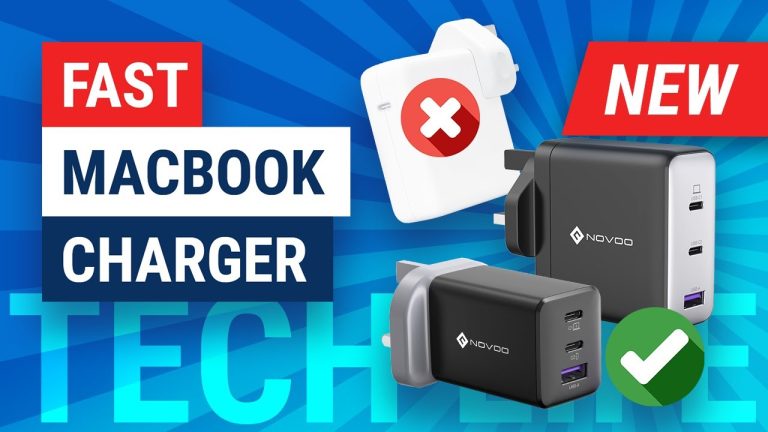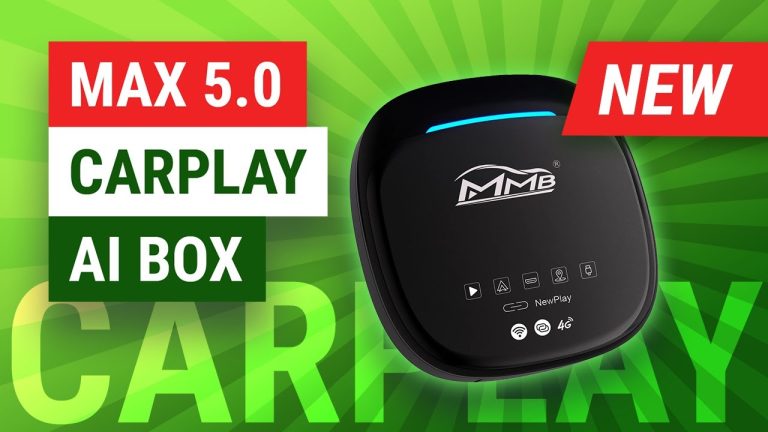In this video, I check out the BRIQ3-DIVO Android 13 AI Box from Kyebriq. You can buy this AI Box for $289 / €267 / £235 directly from Kyebriq 👉🏻 https://bit.ly/kyebriq3divo using my $10-OFF coupon code CARPLAYLIFE at checkout.
This is an AI Box for CarPlay systems, it runs under an Android 13 operating system, and a Snapdragon 662 8-core processor will do the heavy lifting. There’s 8 GB of RAM, and 128GB of storage, and it comes in a fancy Cyberpunk-inspired case design.
In the box you get a paper instructions manual, there is the Briq3-DIVO adapter itself, there is a USB-A to USB-C cable to power the adapter and there is a USB-A to C adapter for more modern CarPlay ports.
Features & Design
Looking over the adapter, its case design is the most striking difference from most other AI Box adapters out there. It’s Cyberpunk-inspired, so it has this carbon pattern texture that sits underneath a clear transparent top casing with a KyeBriq logo stamped on top in a contrasting yellow colour. On the bottom of the case, the transparent casing continues, and underneath you can see all the chips and circuit board inside.
Around the edges are some ventilation slats to keep the large 662 chip inside cool, and on just one end of the adapter there are all the ports and slots to power the adapter, insert a TF card for media and updates, and there is also a SIM card slot for providing the Android apps with a dedicated internet connection.
Boot-Up & Main Menu Interface
I ran this adapter on a number of CarPlay systems, which all worked well, and as usual, I continued the remaining of my tests on my Pioneer 93DAB CarPlay aftermarket system. Bootup time took 30.80 seconds, which included a short bootup animation before landing on the adapter’s Android main menu interface. Unfortunately, I was disappointed to see that the menu didn’t carry over the same aesthetics as the adapter’s branding. It mirrors a slightly modified version of what I saw on the Ultra AI Box adapter, with a new addition of a shortcut app draw at the bottom of the screen that you can manually add your favourite apps into, and there is a three-panel home screen for navigation, media playback, and shortcuts to contacts and calling from your mobile phone over Bluetooth.
Screen input and navigation around the menus are responsive enough, thanks to the higher-end Snapdragon 662 CPU that’s been chosen for this adapter. The 8GB of RAM will help with multitasking, and the 128GB of storage will help with the many downloaded apps that you can install from the Google Play Store, as well as sideload any Android APK files. Before you do this though, you’ll need to get this adapter online first.
Internet & Video Apps
Getting online can be done either by connecting to a local Wi-Fi hotspot, connecting to your mobile phone hotspot, or inserting a data SIM into the slot in the adapter. The latter is required if you want to provide Android OS apps with an internet connection and also be connected to wireless CarPlay or Android Auto at the same time.
The performance of launching my four test apps Spotify, Maps, YouTube and Netflix was on the faster end of the AI Boxes I have tested, this adapter was the fastest AI Box to load the YouTube app. Whilst jumping into the VLC media player app to play video media off my inserted TF card showed decent results with its video playing back smoothly, and VLC handled my high-bitrate video well enough also.
Both YouTube and Netflix video streaming apps ran just fine. An older version of YouTube is pre-installed, meaning its menu interface is a little clunky to work with. But once your chosen video is selected the video plays well enough for casual viewing, with a very slight audio delay shown in my audio sync test, but it wasn’t significant enough to notice in general videos. Netflix also runs and navigates well, and its audio sync was also fine for general watching too.
Wireless Apple CarPlay
Like the Ultra and some Plus AI boxes, this adapter uses Zlink5 for its wireless CarPlay and Android Auto connection. CarPlay paired and booted in 20.16 seconds, and although this adapter was being promoted as having Wi-Fi6 standard, the Wi-Fi connection for CarPlay and Android Auto was using Wi-Fi5. As a result, this adapter has the same lag and audio delay as all the other adapters. I did see a hidden SSID running very briefly that had AX or Wi-Fi6, but it wasn’t reachable for wireless CarPlay or Android Auto and never came back online. So that’s a shame.
Built on Android 13, this adapter runs the most modern Android OS, its pulldown menu has been limited to just a few options, and its main settings screen does have plenty of additional options for the adapter, including some display modes, local GPS and setting up a launch app for connecting to wireless CarPlay or Android Auto after starting up. Its interface still features the floating menu button interface to navigate back, invoke the Google assistant and return to the main menu screen, however, its split-screen button didn’t work for me, which may be a bug.
Wireless Android Auto
I found wireless Android Auto was a little harder to connect to. It took a restart of the adapter and also my Android to fully pair and connect to Android Auto, which took 15.98 seconds. Afterwards, interactions were ok, but its poorer Wi-Fi bandwidth showed a few more issues than CarPlay did, with some glitches in audio playback and general interactions also had some considerable delay to them. Overall, making Android Auto a little frustrating to operate at times.
Both CarPlay and Android Auto had no problems resuming audio from a call, and call quality was slightly higher in volume than normal when recording an audio message over CarPlay. Both resumed audio from bootup, however, it took a few adjustments in the Zlink app and general settings on the adapter before the Zlink app would fire up automatically after bootup.
The Zlink app also has the ability to use the adapter to cast video from your mobile to your CarPlay screen. This requires connecting the adapter to your phone hotspot over Wi-Fi, selecting screen mirroring on iPhone or using the Zplay app on Android to casting your video content to your display. Audio sync was rather laggy on both platforms, SAMPLE so I wouldn’t use this adapter for casting.
With the Snapdragon 662 chipset, 2D and some lightweight 3D gaming on the Briq3-DIVO is possible. Test games, Crossy Road and Subway Surfer ran fine and smooth, with no major frame drops or much lag to touch input. The adapter also supports Bluetooth controllers and remotes, so using these with games and video streaming apps is possible and a better way than using touch input in some games that support them. I tried to connect to my ODBII module in my car, but unfortunately, it didn’t want to connect to it.
My Impressions
The Briq3-DIVO from KyeBriq retails for $289, £235 and €267 direct from KyeBriq store using my $10-off coupon code CARPLAYLIFE, and I’ll leave links above to learn more about this adapter and to buy yourself one.
Personally, I was left a little disappointed with this one. I had high hopes for its cyberpunk aesthetics, its Android 13 OS, its fast chipset, high RAM and storage size, as well as its Wi-Fi6 specification. But sadly there have been many opportunities missed here. The external design gives the impression that its menu interface will continue this same design, but instead, we have the same rather dated and old-looking interface from a few months ago. Android 13 doesn’t bring anything new to the table either, other than futureproofing the adapter with apps and updates on the Google Play Store.
Its fast 662 chipset does improve on some low end Lite models, but it is really offering nothing new against the higher-end competition that was released some months ago, with the only real offering being the advantage of more RAM for more stable multitasking, and some improvement in apps and games that utilise it. Its generous 128GB of storage capacity may be a positive bullet point, however, it will only come into its own when installing large games or locally storing large media files on the adapter, otherwise, I feel a storage of this size will be wasted on most people.
Finally, there is the illusive Wi-Fi6 feature, which I couldn’t see being used or transmitted in any of my test Wi-Fi programs. So in short I find this Briq3-DIVO more of an Android 13 upgrade and slight spec bump in its RAM and storage over its Briq3-Pro model, than what it tries to convey with its fancy aesthetics and promise of lightning-fast Wi-Fi6 connectivity. If aesthetics is really a primary future for your next AI Box, then you’re better off looking elsewhere. Otherwise, the Briq3-DIVO is a very capable AI Box that stands up against the best of them, however, if it had a fancier menu interface and a more stable Android Auto and video casting, it would be the cream of the crop rather than a wolf in sheep’s clothing.
TIMESTAMPS:
0:00 – Brief overview
0:26 – Unboxing
0:38 – Features & Design
1:23 – Boot-up & menu UI
2:54 – Apps YouTube/Netflix
3:57 – Wireless CarPlay
5:14 – Wireless Android Auto
6:29 – Video casting
6:52 – Gaming
7:26 – My Impressions





